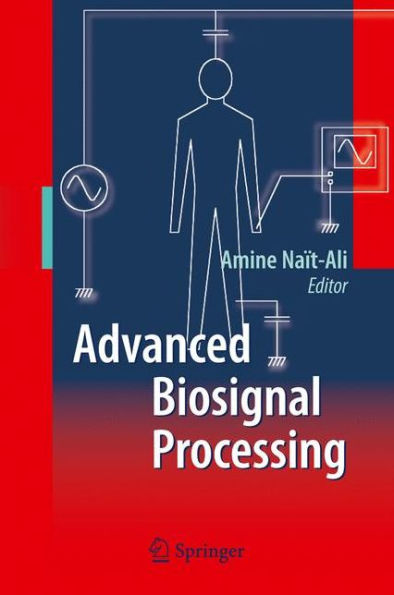Advanced Biosignal Processing
Generally speaking, Biosignals refer to signals recorded from the human body. They can be either electrical (e. g. Electrocardiogram (ECG), Electroencephalogram (EEG), Electromyogram (EMG), etc. ) or non-electrical (e. g. breathing, movements, etc. ). The acquisition and processing of such signals play an important role in clinical routines. They are usually considered as major indicators which provide clinicians and physicians with useful information during diagnostic and monitoring processes. In some applications, the purpose is not necessarily medical. It may also be industrial. For instance, a real-time EEG system analysis can be used to control and analyze the vigilance of a car driver. In this case, the purpose of such a system basically consists of preventing crash risks. Furthermore, in certain other appli- tions,asetof biosignals (e. g. ECG,respiratorysignal,EEG,etc. ) can be used - trol or analyze human emotions. This is the case of the famous polygraph system, also known as the “lie detector”, the ef ciency of which remains open to debate! Thus when one is dealing with biosignals, special attention must be given to their acquisition, their analysis and their processing capabilities which constitute the nal stage preceding the clinical diagnosis. Naturally, the diagnosis is based on the information provided by the processing system.
1117770727
Advanced Biosignal Processing
Generally speaking, Biosignals refer to signals recorded from the human body. They can be either electrical (e. g. Electrocardiogram (ECG), Electroencephalogram (EEG), Electromyogram (EMG), etc. ) or non-electrical (e. g. breathing, movements, etc. ). The acquisition and processing of such signals play an important role in clinical routines. They are usually considered as major indicators which provide clinicians and physicians with useful information during diagnostic and monitoring processes. In some applications, the purpose is not necessarily medical. It may also be industrial. For instance, a real-time EEG system analysis can be used to control and analyze the vigilance of a car driver. In this case, the purpose of such a system basically consists of preventing crash risks. Furthermore, in certain other appli- tions,asetof biosignals (e. g. ECG,respiratorysignal,EEG,etc. ) can be used - trol or analyze human emotions. This is the case of the famous polygraph system, also known as the “lie detector”, the ef ciency of which remains open to debate! Thus when one is dealing with biosignals, special attention must be given to their acquisition, their analysis and their processing capabilities which constitute the nal stage preceding the clinical diagnosis. Naturally, the diagnosis is based on the information provided by the processing system.
199.99
In Stock
5
1

Advanced Biosignal Processing
378
Advanced Biosignal Processing
378Paperback(Softcover reprint of hardcover 1st ed. 2009)
$199.99
199.99
In Stock

Product Details
| ISBN-13: | 9783642100451 |
|---|---|
| Publisher: | Springer Berlin Heidelberg |
| Publication date: | 12/16/2010 |
| Edition description: | Softcover reprint of hardcover 1st ed. 2009 |
| Pages: | 378 |
| Product dimensions: | 6.10(w) x 9.25(h) x 0.03(d) |
From the B&N Reads Blog
